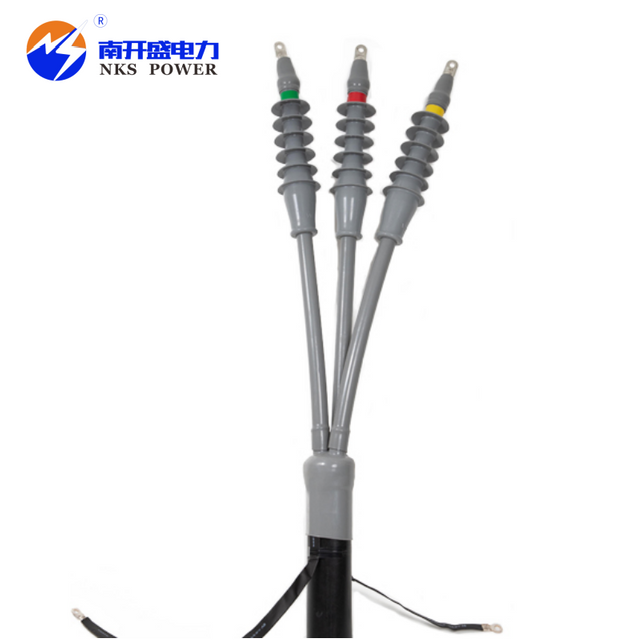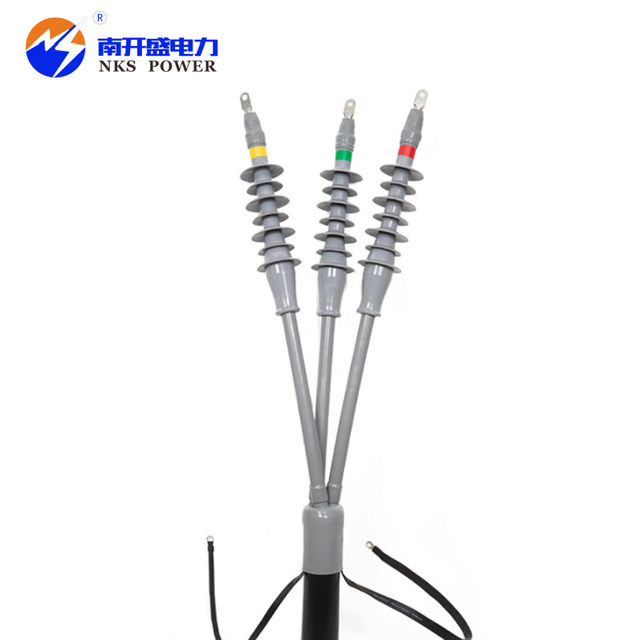At NKS POWER, being a supplier of cold shrink terminations on a professional basis puts it under commitment to provide its global customers with high-quality and high-performance products of cold shrink termination. Cold shrink terminations from this company apply advanced cold shrink technology whereby sealing and insulating the end of the cable is achieved by physical contraction without any chemical reaction involved so that stable operation can be realized even under extreme conditions. Compared with the traditional heat-shrink terminals, cold shrink terminals have great installation advantages since they need no heating tool to be used and guarantee uniform shrinkage. These are mostly applied in medium as well as low-voltage cable systems.
Ⅰ. Features of Cold Shrink Termination
It is made from high-performance liquid silicone rubber
High mechanical strength, suitable for a variety of power cables
Strong UV resistance and strong weather resistance
Has excellent insulation properties, corona resistance and tracking resistance
Simple design and reasonable structure
Built-in stress control, uniform electric field distribution
Suitable for copper and aluminum cables
Suitable for crimp lugs and mechanical lugs
Quick assembly and simple installation
Ⅱ. Category Introduction
Outdoor Cold Shrink Terminations: Engineered for harsh outdoor conditions, these offer superior waterproofing, moisture resistance, and UV protection. They maintain excellent electrical and mechanical performance under extreme conditions including high/low temperatures and high humidity.
Indoor Cold Shrink Terminations: Designed for indoor environments, these feature simple installation and minimal space requirements. They effectively enhance cable termination reliability and safety while reducing maintenance costs.
Ⅲ. Application Scenarios
1. Power Systems
In medium- and low-voltage cable lines, cold-shrink terminals significantly enhance cable termination reliability and safety, reduce failure rates, and ensure stable power system operation.
2. Industrial Sector
In chemical, metallurgical, and machinery manufacturing industries, cold-shrink terminals' chemical corrosion resistance and high-temperature tolerance make them an ideal cable termination choice, meeting diverse demanding environmental requirements.
3. Construction Sector
In commercial buildings, residential complexes, and industrial parks, the ease of installation and reliability of cold-shrink terminals make them an ideal cable termination solution, effectively enhancing the safety and aesthetics of electrical systems.
4. Transportation Sector
In subway, railway, and highway infrastructure, the waterproof, moisture-resistant, and UV-resistant properties of cold-shrink terminals enable long-term stable operation in harsh outdoor environments, ensuring reliable power supply for transportation facilities.
5. Telecommunications Sector
In communication base stations and data centers, cold-shrink terminals' high reliability and interference resistance make them the preferred cable termination choice, effectively safeguarding the stable operation of communication systems.
Ⅳ. Installation Guide
1. Pre-Installation Preparation
Before installation, clean and inspect the cable to ensure its surface is clean and undamaged. Prepare necessary tools and materials, such as cleaning cloths, alcohol, and cable stripping tools.
2. Cable Preparation
Based on cable specifications and cold-shrink terminal requirements, use cable stripping tools to remove insulation and sheathing to the appropriate length, exposing the conductor. Clean the cable surface with a cleaning cloth and alcohol to ensure no oil, dust, or other contaminants remain.
3. Installing the Cold Shrink Terminal
Position the cold shrink terminal over the cable, ensuring its sealing section tightly adheres to the cable insulation. Use specialized tools to shrink the terminal, achieving uniform contraction and a snug fit against the cable surface. During shrinkage, avoid over-shrinking or uneven contraction to maintain the terminal's sealing and insulation integrity.
4. Inspection and Testing
After installation, inspect and test the cold-shrink terminal to confirm proper installation, effective sealing, and reliable insulation performance. Use an insulation resistance tester to verify the terminal's insulation resistance meets relevant standards.
5. Maintenance and Care
During operation, perform regular maintenance and inspections on the cold-shrink terminals. Check their sealing integrity and electrical performance to promptly identify and address potential issues. Additionally, take precautions to prevent mechanical damage and chemical corrosion, ensuring long-term stable operation.







